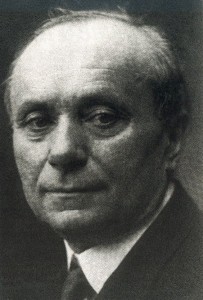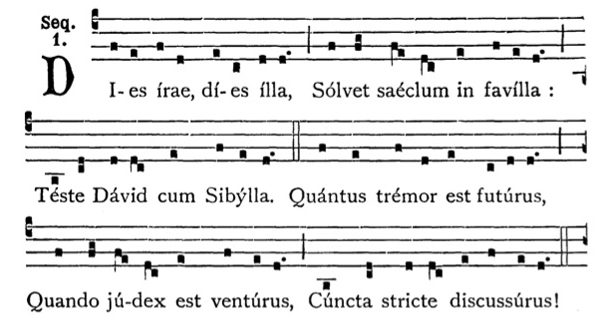As I prepare to play selections from Tournemire’s L’Orgue mystique for All Saints this weekend, I thought we’d look at the second movement for some improvisation ideas.
Form and Language
The Offertoire for All Saints is based on the chant Justorum animae. The short piece contains five sections: A)harmonized chorale, B) monophonic chant, A’)elaborate harmonized chorale, B’) shorter monophonic chant, C) Coda.
The chant is in Dorian, Mode 1, so though there are no alterations in the key signature, because Tournemire starts the chant on G, every B is flatted except at the final cadences of the A sections. He borrows from closely related modes by including E-flats and A-flats. The chant is presented in half notes in the soprano, but Tournemire suppresses all the repeated notes, making each pitch of the chant equal in duration. While a traditional Bach-style chorale harmonization would include many root position chords, Tournemire rarely uses root position triads. Sevenths, suspensions, and inversions keep the progression unstable even at the cadence in the middle of the section at the end of the first phrase of the chant. The voices move mostly with step-wise motion.
The second section is a monophonic statement of the last two phrases of the chant. The change of registration and texture provide a contrast to the opening chorale. The relative speed of the chant also changes dramatically from half-notes to eighth-notes.
The return to the opening material for the third section is on a slightly softer registration and now includes more motion. While there were occasional eighth-notes in the first harmonization, this repetition keeps to the same harmonies, but includes constant eighth-note motion.
The fourth section is an echo of the second. The registration is softer, and only the second (final) phrase of the chant is cited. The final section seems to be a return to the opening material, but does not cite any of the chant. It is more of an extended harmonic return to an open fifth on the tonic G.
As offertories often take different lengths of time in different places, it strikes me that this piece could be easily shortened if needed by leaving out a section (or two or three). It would also be possible to repeat the longer B section instead of the shorter B’ section in order to lengthen the piece. While I do not know that Tournemire intended a performer to do these things, if we consider these pieces as examples of how we can improvise and fulfill the musical needs of the liturgy, I see no reason not to alter the number of sections we might play.
Applications
To summarize, here are ten ways to apply ideas from Tournemire’s Offertoire in our improvisations:
- Alternate contrasting sections to create a piece to cover an unknown length of time.
- Borrow from closely related modes or keys for harmonic interest.
- Use inversions and suspension to keep the piece moving forward.
- Suppress repeated notes in the melody.
- Standardize the rhythm of the melody into one time value.
- Change the unit of standardization for contrasting formal sections.
- Use single voice textures.
- Plan for repetition. Make sure you can play what you just played again.
- Repeat with variation. Keep it the same, but add more motion.
- Use registration to help mark formal sections.
As an example, I recorded an improvisation on Veni Veni Emmanuel following the model of this movement which you can watch here. As I recorded it before writing this column, I’m not sure I followed all ten of the above ideas, but hopefully it demonstrates at least some of the ways to apply ideas from Tournemire to a new theme.
Happy Halloween!
Glenn
Newsletter Issue 52 – 2015 10 31
See the complete list of past newsletter issues here.
Sign up to receive future issues using the box to the right on this page.









